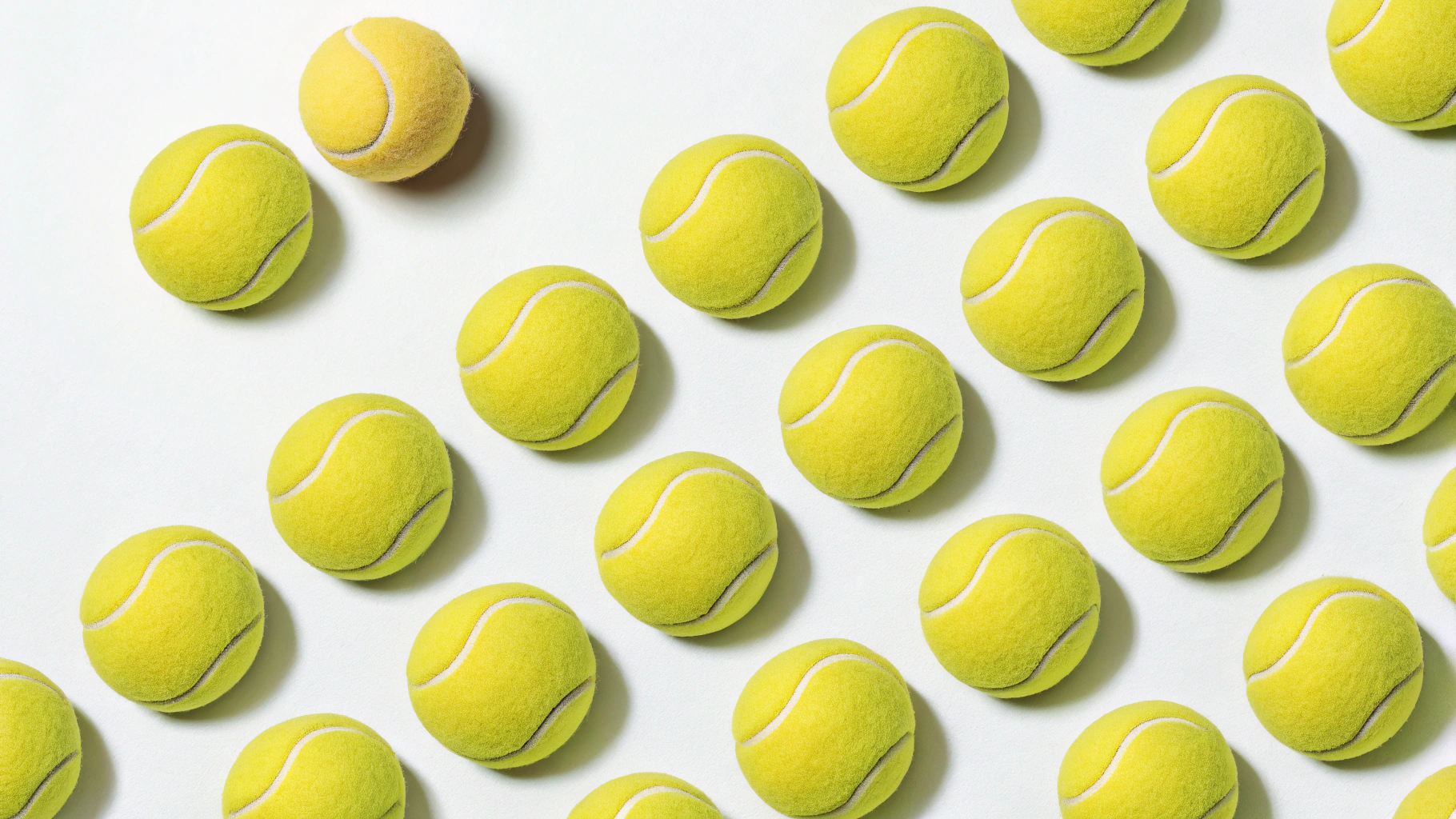Tennis balls are a vital component of the game, and their design, specifications, and variations play a crucial role in ensuring fair competition, enhancing gameplay, and catering to different skill levels and age groups. This guide provides a comprehensive overview of tennis balls—from their standard measurements and materials to practical considerations for selection and maintenance—offering insights valuable to both beginners and experienced players.
Introduction
The history of tennis balls dates back to the origins of tennis in the 12th century, where balls were originally made of animal intestines wrapped in cloth. Over time, innovations led to the modern-day rubber core tennis balls we use. Specifications and standards matter because they ensure consistency in gameplay, especially in professional settings. Governing bodies like the International Tennis Federation (ITF) dictate official regulations and guidelines to uphold fairness and preserve the integrity of the sport.
- Specifications are crucial for factors like bounce, speed, and durability.
- Official regulations ensure uniform play in international and regional tournaments.
- Standards protect player safety and optimize performance.
Standard Measurements & Specifications
Tennis balls are meticulously standardized to ensure consistency in professional games while accommodating recreational, amateur, and youth-level needs.
| Specification | Metric Units | Imperial Units | Notes |
|---|---|---|---|
| Diameter | 6.54 - 6.86 cm | 2.57 - 2.70 inches | Varies slightly for amateur and youth categories. |
| Weight | 56.0 - 59.4 g | 1.98 - 2.10 ounces | Heavier balls are preferred for windy conditions. |
| Bounce (tested at 23°C) | 135 - 147 cm | 53.1 - 57.9 inches | Measured from a 2.54 m (100-inch) drop. |
| Pressure | 12 psi (internal) * | 12 psi (internal) * | *For pressurized balls only; varies for non-pressurized balls. |
| Felt Composition | 50% Wool, 50% Synthetic | 50% Wool, 50% Synthetic | Approved by ITF; regional variations possible. |
Understanding Key Components
Tennis balls are crafted with precision. Each component serves its own purpose, contributing to performance and durability.
- Rubber Core: Acts as the central component, providing bounce and pressure consistency.
- Felt Covering: Made from a blend of wool and synthetic fibers, felt affects aerodynamic properties and ball spin.
- Markings: Balls often display logos, numbers, and branding—useful for identification during matches.
- Surface Texture: Pressurized tennis balls have a fluffier felt; non-pressurized balls may have denser textures to enhance longevity.
Different Variations
Tennis balls come in several variations to cater to diverse needs. International standards, regional preferences, and specific modifications affect their design.
- International Standards: Governed by ITF, all professional balls meet strict criteria for diameter, weight, and bounce.
- Regional Differences: Some regions use non-pressurized balls for recreational purposes due to their durability.
- Competition vs. Recreational: Pressurized balls are ideal for tournaments; recreational use favors non-pressurized balls for longer usage.
- Age-Group Modifications: Junior balls are larger and lighter to ease learning, while foam balls are popular for youth groups.
Practical Considerations
Using tennis balls effectively requires understanding setup guidelines, maintenance tips, and the space requirements for proper gameplay.
- Space Requirements: Standard court dimensions are necessary for official play.
- Setup Guidelines: Ensure proper pressure and clean felt before use.
- Maintenance Tips: Store pressurized balls in airtight containers; replace worn balls as needed.
- Common Mistakes: Avoid using balls that are overinflated or underfelted as they can impact gameplay adversely.
Selection Guide
Choosing the right tennis ball involves considering factors like skill level, usage, and budget. Listed below are key recommendations.
| Skill Level | Ball Type | Features | Recommended Brands |
|---|---|---|---|
| Beginner | Low-compression | Slower speed, lighter weight | Penn QST, Wilson Tru Tennis |
| Intermediate | Pressurized | Standard bounce, good spin | Slazenger, Dunlop Fort |
| Advanced/Professional | High-quality pressurized | Optimized bounce, durability | Babolat, Tretorn |
| Recreational | Non-pressurized | Long-lasting, durable felt | Gamma, Penn |
FAQs
- Are pressurized and non-pressurized tennis balls the same? No, pressurized balls offer better bounce but wear out faster, while non-pressurized balls are more durable but have less vibrant bounce.
- How often should tennis balls be replaced? Regular players should replace balls every 2-4 weeks, while casual users may replace them every few months.
- What do tennis ball numbers signify? Numbers help players identify their balls during matches but do not affect performance.
- Are there eco-friendly tennis ball options? Yes, some brands offer recyclable felt and biodegradable rubber designs.
- What's the difference between foam and rubber balls? Foam balls are designed for younger players and indoor usage, whereas rubber balls cater to outdoor professional games.
- Do climate conditions affect tennis balls? Yes, high humidity and heat can accelerate wear in felt, while cold conditions reduce bounce.
- Can I use tennis balls for other purposes? Certainly! Tennis balls are versatile and can be used for pet toys, massage therapy, or DIY projects.
- Are cheaper tennis balls worth it? Cheaper options may suffice for recreational use but tend to wear out faster and lack professional quality.
Tips and Best Practices
Maximize your performance and enjoyment with these industry-recommended tips.
- Optimizing Use: Rotate balls during play to evenly wear the felt, reducing "flat spots."
- Safety Considerations: Avoid using old balls that no longer bounce properly, as they can affect wrist and arm strain.
- Professional Insights: Store balls in temperature-controlled environments to extend their life span.
- Energy Saving: Non-pressurized balls serve well for mass practice sessions, as they’re cheaper in the long run.
Tennis balls are more than just equipment for the game—they’re engineered tools that enhance performance, shape the trajectory of rallies, and cater to diverse needs. Understanding their characteristics, variations, and best uses helps players optimize their performance while enjoying the sport to the fullest.











 浙公网安备
33010002000092号
浙公网安备
33010002000092号 浙B2-20120091-4
浙B2-20120091-4